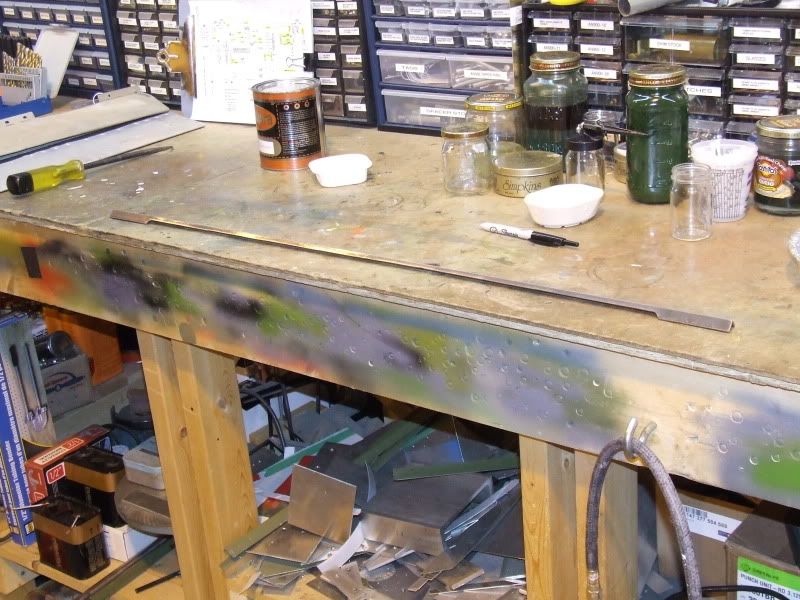
This was the beginning of my idea, a 1/2" square, L shaped piece of steel with one side taken down to 1/4", but it's not working out. It's too long (36") and not rigid enough anymore with that 1/4" taken out to make it fit inside the tab (the 1/2" "ears" for clamping in the vices fit through the tab at a forty five degree angle). The side you see in the picture would be the vertical portion of the tool and the other side would be polished to drive the rivets against. You could buck the 1/8" rivets at the ends of the tabs with it, but it wouldn't do much of a job on the middle ones. I've had to go back up to work but as soon as I get home I'm going to cut down a 1/2" square tube so it'll have two webs instead of one, and it'll be shortened up some, though I'm not certain just how long it's going to have to be. Alternately reversing it in the tab might allow you to shorten it more which would help keep it rigid (effectively giving you a mirror image without lengthening the bar). And instead of milling out slots for the clecos I'm going to try to use just separate pairs of holes (3/16" diameter for 1/8" fasteners, for example) for the cleco stubs to drop into as the rivet is being driven, but I want to keep the number of holes to a minimum so again it doesn't lose any more strength than it has to. Driving back and forth from the airport I've been looking for someone with a wrought iron fence with straight, two foot long, 1/4" verticals, but they don't seem to be much in vogue anymore!

Maybe at the park...
As for the fuel valve, while digging through a box of junk in the hangar one day looking for something else, I discovered a Parker Appliance Company, all steel ball valve, complete with an RCAF overhaul tag on it! It's a simple on-off valve, oriented exactly like an original D-3 valve, and it flow tested at at least thirty-eight gallons/hour. It's an aircraft fuel valve and a really nice one, absolutely perfect inside and out, but I don't know what it's off of originally.
Dan





